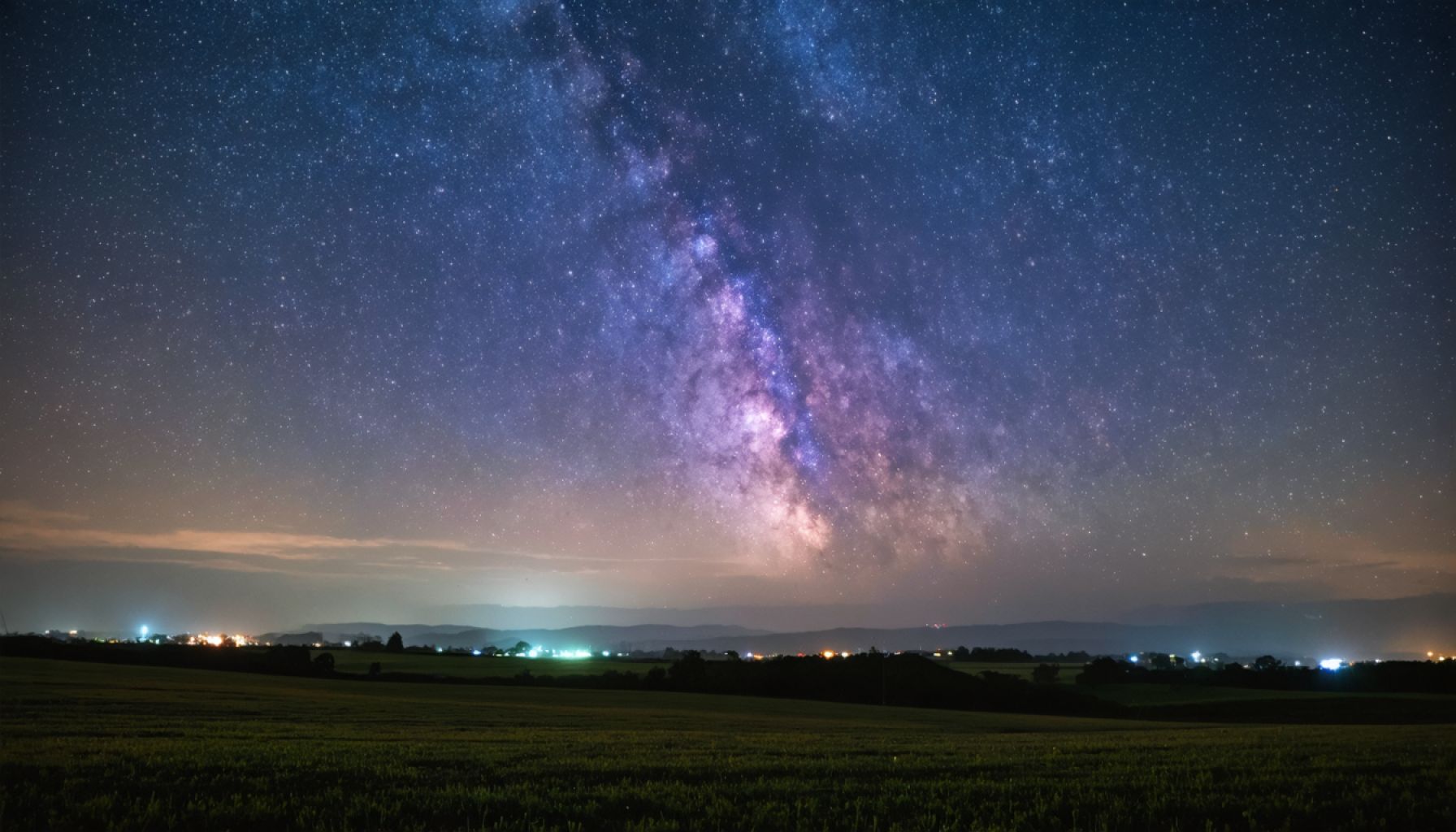- Pinal County participates in International Dark Sky Week to combat light pollution.
- The “Dark Sky Lights Out” event on Monday encourages turning off nonessential lights from 8:30 p.m. to 9 p.m.
- The initiative aims to reconnect people with natural nocturnal skies and enhance environmental awareness.
- It highlights the impact of artificial light on the natural environment and promotes celestial preservation.
- The initiative aligns with the International Dark-Sky Association’s mission for global dark sky preservation.
- Last year’s event was a success, drawing diverse participation and inspiring environmental stewardship.
- Community events and details can be accessed at Pinal County’s portal: pinal.gov/DarkSkies.
As the shadows deepen over Pinal County, a quiet rebellion takes shape against the sprawling tendrils of light pollution. This week, as part of International Dark Sky Week, the community unites with a shared mission: to reclaim the nocturnal wonders obscured by urban glow.
Against a canvas of infinite black, etched with twinkling constellations and meteors tracing ephemeral paths, the county will press pause on nonessential lighting from 8:30 p.m. to 9 p.m. next Monday. This is the “Dark Sky Lights Out” initiative — a simple yet profound gesture aimed at restoring the night to its pristine state, allowing the universe to spill its secrets more clearly to all gazing upward.
Beyond flicking off switches, Pinal County fosters a deeper dialogue about the interplay between artificial light and the natural environment. It’s a moment that transcends energy conservation, serving as a bridge to the forgotten bond we share with the cosmos. Each participation is an acknowledgment of the heritage that skies so majestically arch over us — one threatened by the glow of unchecked development and ceaseless activity.
The event was a soaring success last year, drawing stargazers from all walks of life to look up, feel small, and be part of something vast. Organizers are hopeful to replicate that very magic, inspiring more to see the skies as a crucial aspect of environmental stewardship.
Pinal County’s efforts are not solitary. They echo a global chorus, aligned with the International Dark-Sky Association’s mission to preserve the celestial brilliance integral to human and ecological environments. It is a movement reminding us that small community-driven actions can ripple into substantial change — a gentle reminder that sometimes, the most profound way to illuminate the road ahead is to first, dim the lights.
For a glimpse into upcoming community events and details on the initiatives during this starlit celebration, residents and visitors are urged to explore Pinal County’s portal at pinal.gov/DarkSkies. There lies a call to reconnect with the universe, weaving awareness with wonder, proving that in a world increasingly cast in fluorescence, starry nights still hold the power to captivate hearts and minds.
Why Turning Off the Lights Could Save Our Stars: The ‘Dark Sky Lights Out’ Movement
The Increasing Impact of Light Pollution
Light pollution is an often-overlooked environmental issue that disrupts ecosystems, impacts human health, and obscures our view of the universe. According to the International Dark-Sky Association, excessive artificial lighting affects migratory patterns of birds and other wildlife, disturbs human circadian rhythms, and wastes billions of dollars in energy.
How-To Steps for Participating in ‘Dark Sky Lights Out’
1. Turn Off Non-Essential Lights: Join Pinal County in turning off non-essential lights from 8:30 p.m. to 9 p.m. next Monday. This simple action will help reduce light pollution.
2. Use Outdoor Lighting Wisely: Install motion-sensor lights and direct outdoor lighting downward to minimize skyglow.
3. Educate Your Community: Host a local stargazing event and educate others about the importance of dark skies.
4. Support Policies: Advocate for lighting ordinances that aim to reduce light pollution in your area.
Real-World Use Cases of Dark Sky Initiatives
Communities like Flagstaff, Arizona, the first International Dark Sky City, have successfully implemented lighting ordinances that preserve starry nights while maintaining safety and security. Such measures can lead to higher quality of life and promote tourism.
Industry Trends and Innovations
Advancements in lighting technology, such as LEDs that minimize blue light, are crucial. Smart city solutions aim to use sensors and adaptive lighting to reduce unnecessary artificial light.
Features and Benefits
– Environmental Protection: Reduces ecological disruptions and supports wildlife.
– Energy Conservation: Saves energy, cutting down on unnecessary power usage—and utility bills.
– Human Health: Improves sleep quality by reducing nighttime exposure to artificial light.
– Astronomical Observations: Enhances star visibility for both amateur and professional astronomers.
Potential Limitations
– Initial Cost: Installing smart lighting or new fixtures can be costly.
– Safety Concerns: Some believe reduced lighting may lead to increased accidents or crime, though evidence suggests well-designed lighting can mitigate these concerns.
Quick Tips for Reducing Light Pollution
– Replace outdoor bulbs with ‘soft’ or ‘warm’ white options.
– Install timers to ensure lights are off when not needed.
– Work with local governments to improve municipal lighting policies.
Conclusion
Participating in events like ‘Dark Sky Lights Out’ is a crucial step towards combating light pollution. It’s more than an energy-saving effort; it’s about reconnecting with the natural world and preserving our night skies. Small changes on a local level can lead to global impacts, highlighting the power of community action.
For more insights and to support similar initiatives, consider visiting International Dark-Sky Association or Pinal County’s dark sky initiatives page at pinal.gov.
Actionable Recommendation
Organize a stargazing event or educational session during International Dark Sky Week to raise awareness and inspire action within your community. This small step can spark interest in preserving one of our most magical natural resources—the night sky.
